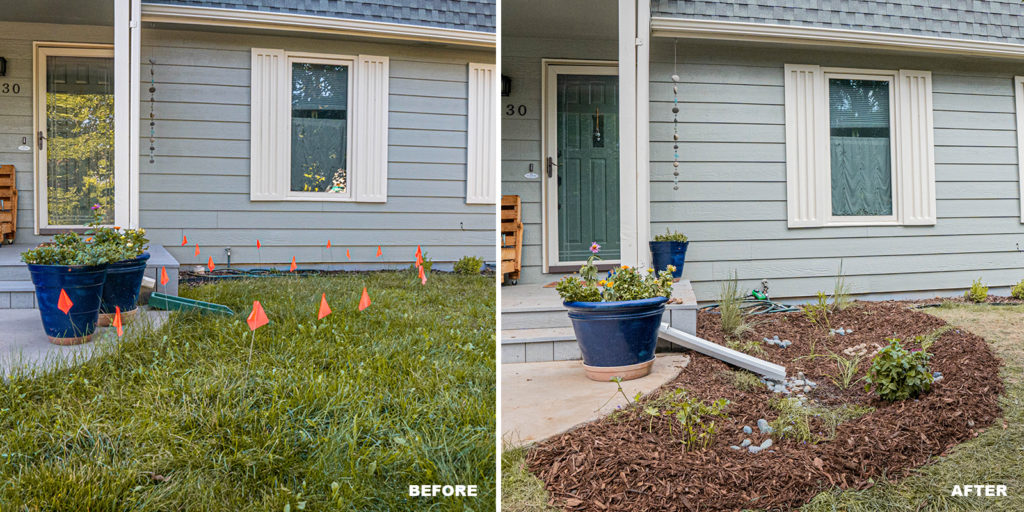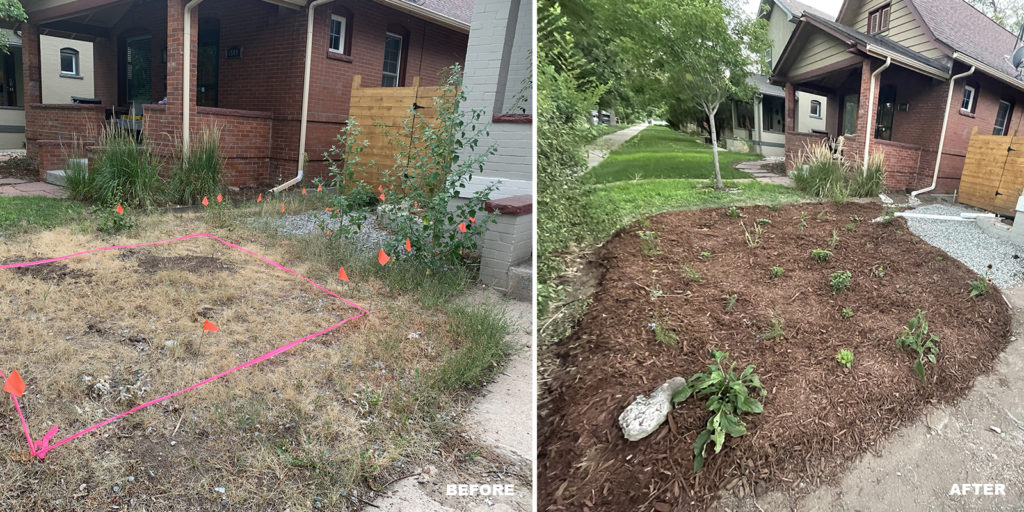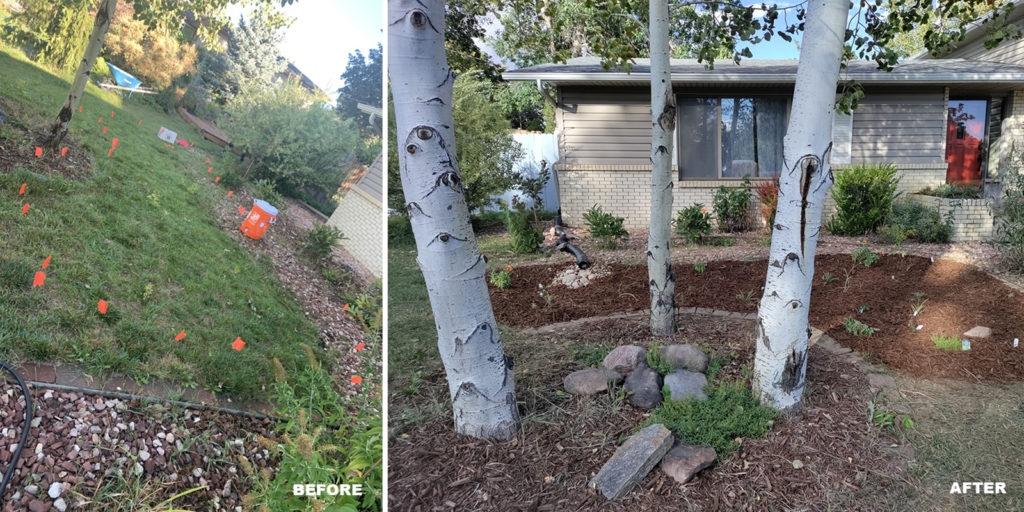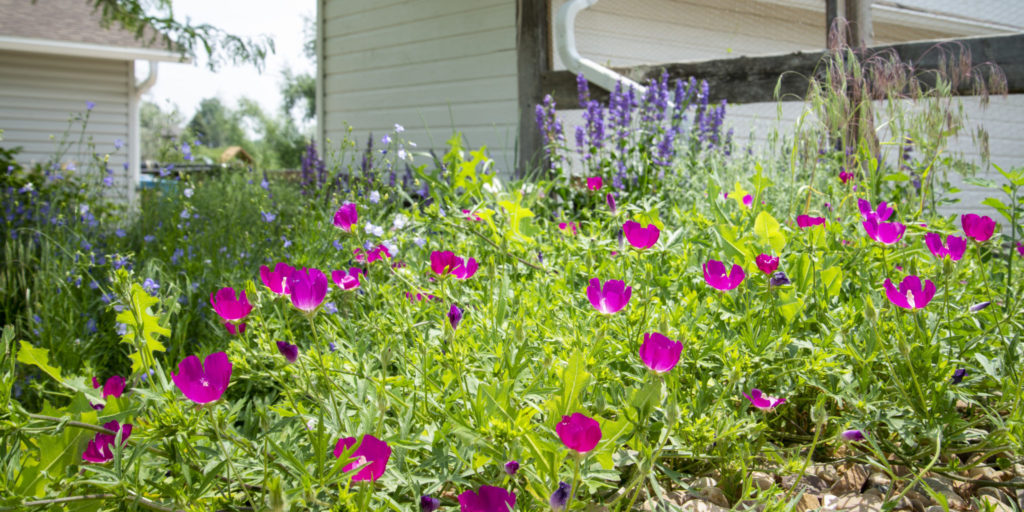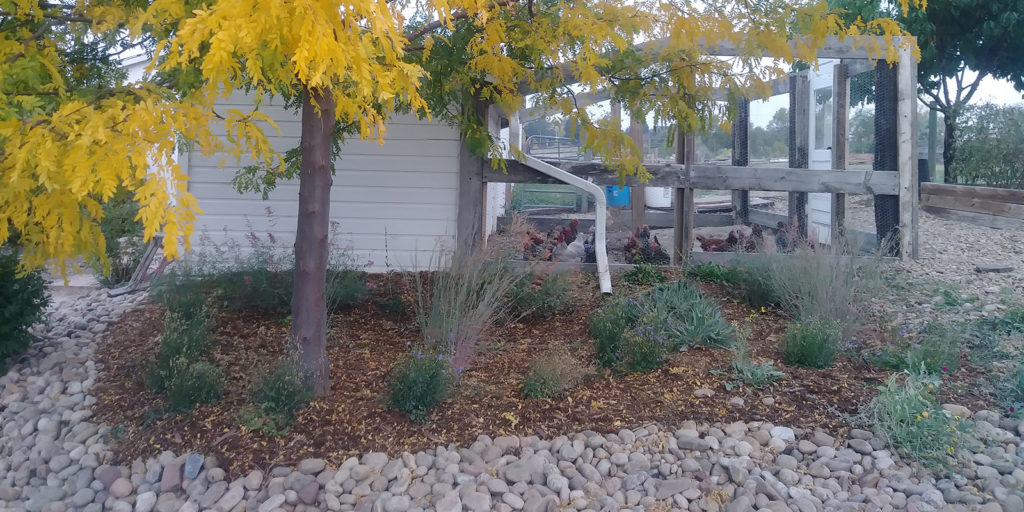
As water resources dwindle in the U.S. West under the pressures of drought, growing population and climate change, Colorado residents are looking for ways to save water. An interdisciplinary team from Colorado State University is providing the resources homeowners need to adapt their landscapes to use less water.
Colorado’s Turf Replacement Program, which became law in June, incentivizes residents to replace non-native grass with low-water landscaping. A recent project led by the Colorado Stormwater Center has made training, planting guides and examples of water-wise landscaping available to homeowners.
Project lead Jessica Thrasher, the Colorado Stormwater Center director of education and outreach, wants people to know that rain gardens are one good option for replacing their turf.
“This is just one example of how we can transition our yards to be beautiful, functional, protect water quality, and bring in native pollinators and wildlife, while also saving water,” Thrasher said.
Rain gardens help prevent flooding while conserving and cleaning water that will eventually find its way back into rivers. They are shallow depressions that collect rainfall from a house’s downspout, allowing the runoff to naturally seep into the ground.
Rain gardens are planted with native plants that are adapted to Colorado’s arid climate. They also create habitat for butterflies, bees and birds.
Rain gardens are beautiful additions to yards, Thrasher said, but people often don’t know what they look like. So over the summer and early fall, Thrasher and two CSU Extension interns, Riley Lynch and Mia Campbell, installed 19 rain gardens along the Front Range to serve as examples.
Following 870 hours of manual labor, the team can now boast they have replaced 1,200 square feet of turf grass for an estimated 14,952 gallons of water saved.
“Our gardens are pretty small, 50 to 100 square feet, but when you add them all up, they make a big difference,” said Lynch, an anthropology graduate student, in a video produced by CSU Extension.
Thrasher said the demonstration gardens need a couple years of growth before they look their best, but even during the installation phase, the gardens were creating interest in water-wise landscaping. Neighbors and drive-by traffic would stop to ask the crew how they could get a rain garden.
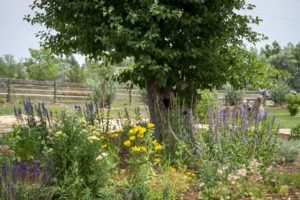
Thrasher said installing a rain garden is something most people can do with minimal training. The Colorado Stormwater Center offers classes on rain garden installation and has posted resources online, including the planting layouts used for this project. The layouts were designed by Jennifer Bousselot, an assistant professor in Horticulture and Landscape Architecture, and Thomas Hickey, a Horticulture and Landscape Architecture graduate student.
All the education and training resources are available in English and Spanish, and the signs that will adorn the test gardens will be bilingual as well. Thrasher has made language justice and inclusion of diverse community members a focus of every Stormwater Center project.
“A lot of times people who speak Spanish aren’t able to participate in pilot programs like these because they’re only in English, so we wanted to remove that barrier for people to participate in the project,” Thrasher said.
Thrasher said pilot programs such as this show how research translates to communities. With this proof of concept completed, she hopes to scale up the project.
She would like to work with area schools to use rain gardens as a tool for education, while giving kids access to nature. She plans to engage nurseries to make sure people using the layouts created for this project can find enough of the plants they need. She also hopes to convince developers to install water-wise landscapes and HOAs to approve the layouts.
“Sustainability is easy to incorporate in your own landscapes,” Thrasher said.
Northern Colorado residents are eager for sustainable landscapes. More than 300 homeowners applied to be part of the program and have rain gardens installed in their yards.
The gardens were installed in Fort Collins, Wellington, Greeley, Windsor, Loveland, Longmont, Commerce City, Centennial and Denver. The Colorado Water Conservation Board, CSU Extension and the Colorado Water Center at CSU were the project’s main sponsors, with Northern Water, Mile High Flood District, Groundwork Denver, and the cities of Fort Collins and Greeley funding materials.
Read more about Lynch’s and other internship experiences across Colorado here.
